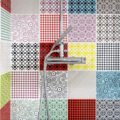“By being natural and sincere, one often can create revolutions without having sought them.”
Christian Dior
Until the 3rd of November 2019, Villa Pisani opens its doors with the exhibition “Timeless elegance. Dior in Venice in the Cameraphoto Archives”. An occasion to visit a photographic exhibition unique in its kind. The venetian photography agency, founded in 1946 by Dino Jarach, captures involving venetian instants coprotagonists of the international campaign of the 1951 by Christian Dior, the tailor, maybe the most popular, of the first half of the XX century. This unmissable event permits to visit “the queen of the venetian villas”.
“I wanted the clothes to be ‘built’, modelled on the curves of the female body whose shapes would be stylized”, told Dior that, with the New Look revolution, brought back the postwar Paris at the peak by the fashion point of you. This Haute Couture collection is presented at the 30 of rue Montaigne in Paris on the 12th of February 1947 by a Christian Dior just 42 years old. Roundness of the shoulders, emphasis given at the chest by a tight waist, sumptuous bell-shape skirts. The end of austerity and a comeback to femininity hold in 95 pieces which remember the past projecting on the future, in an antithesis with the feminist model which portrays the successful woman by Chanel. One of these is definitely the Bar, a black and ivory suit with an elaborated and unimaginable style. Lines are inspired by the interior design of the era and over the years it has become one of the icons by Christian Dior.
Contrary to the name given to it, this collection wasn’t so innovative, but it took a lot from the French fashion of the end of the 1800. Not surprisingly, Dior himself said to have been inspired by the elegant dresses wore by his mother. So, this bring us in the end of the XIX century, same era than the different printings that fill up the walls of our classic elegant floors taken from “La mode illustrée”, one of the most known large-format weekly publications of the French fashion curated by Firmin Didot. These prints, showing the Victorian fashion of the era, were hand colored and directly inserted in the revue, followed by serial description pages. The first publication was on 1859 and it usually came out on Sundays. Until the 1872, it has created some of the best fashion prints of the time: its engraving where bigger, more detailed and more artistically colored than those of their English, French or American competitors. However, found out the prohibitive publication cost of these original works, “La mode illustrée” closed down.
We wait for you at the AbanoRitz in order to admire the several panels “jealously shared” and why not, maybe allowing yourself a hike to Villa Pisani. The majestic villa of the nobles Pisani, important aristocratic venetian family, hosted doges, kings and emperors in its 114 rooms (today 168). Initially it was a simple sixteenth-century building, modernized in the seventeenth century and then completely renovated in 1721 on a project of Girolamo Frigimelica. The fall of the Republic and the gambling addiction run into debts the Pisani family bringing them to sell. In 1807 it was bought by Napoleon Bonaparte, but in 1814, after Waterloo, came the Habsburg imperial family, who became the Lady of the Lombardy-Veneto kingdom. Nowadays it is a national museum which exposes furniture and artworks of the XVIII and XIX century.










